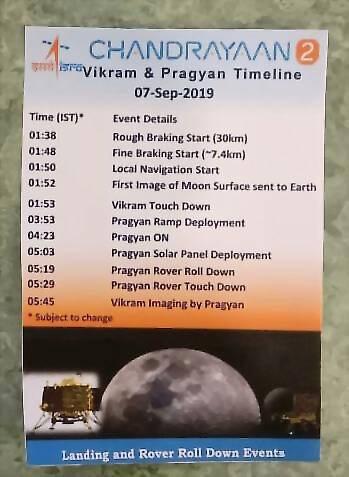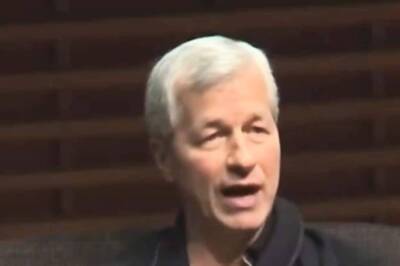
views
New Delhi: Chandrayaan 2 will beam the first image of the lunar surface back to Earth at 1:52am on Saturday, following which the lander, named Vikram, will touch down on the Moon a minute later at 1:53am.
As the country counts down to India’s historic date with the Moon, the Indian Space Research Organisation (ISRO) has released a detailed timeline of the action-packed night ahead.
As per the timeline, Vikram’s touchdown will be followed by the deployment of rover Pragyan’s ramp and solar panel, after which the rover will touch the Moon’s surface.
In yet another exciting moment, rover Pragyan will photograph the lander Vikram at 5:45am.

Chandrayaan 2 is a three-component mission, comprising an orbiter, a lander and a rover. The lander 'Vikram', named after father of Indian space research programme Dr Vikram A Sarabhai, carrying the rover 'Pragyan', will be landed in a high plain between two craters at a latitude of about 70 degree south of the moon.
Then the 27-kg 'Pragyan' meaning 'wisdom' in Sanskrit and a six-wheeled robotic vehicle, will set out on its job of collecting information on lunar surface. The rover can travel up to half a kilometer leveraging solar energy and both Pragyan and Vikram have a mission life of one lunar day, which approximately equals 14 Earth days.
The Chandrayaan-2 has 13 payloads in total with eight of them in the orbiter, three payloads in Vikram and two in Pragyan. Five payloads are from India, three from Europe, two from the US and one from Bulgaria.
The success rate of landing on the moon is only 37%, ISRO chairman Dr K Sivan had said earlier in a news conference. When the semi-autonomous lander uses artificial intelligence to land on its own, after matching the landing spot with pre-loaded images of the region, "it'll be a mix of feeling, of happiness and tension and more anxiety," Sivan said, likening it to a "bridegroom separated from the parents' house."
A rover will study permanently shadowed moon craters that are thought to contain 100 million tons of water, deposits that were confirmed by Chandrayaan 1 mission in 2008.
Scientists believe water and mineral deposits could make the moon a good pit stop for further space travel.
Sivan had said NASA's Artemis mission will use the data from Chandrayaan 2 to send astronauts to the moon by 2024, preparing the way for human missions to Mars.
"We are going to land at a place for the first time on the south pole and NASA has already announced the project of a having human habitat type of thing on the south pole. So this will be giving input on a program which is concerning humanity in a major way," he added.
Sivan has said that the around $140 million Chandrayaan 2 mission was the nation's most prestigious to date, in part because of the technical complexities of landing on the lunar surface — an event he described as "15 terrifying minutes."


















Comments
0 comment